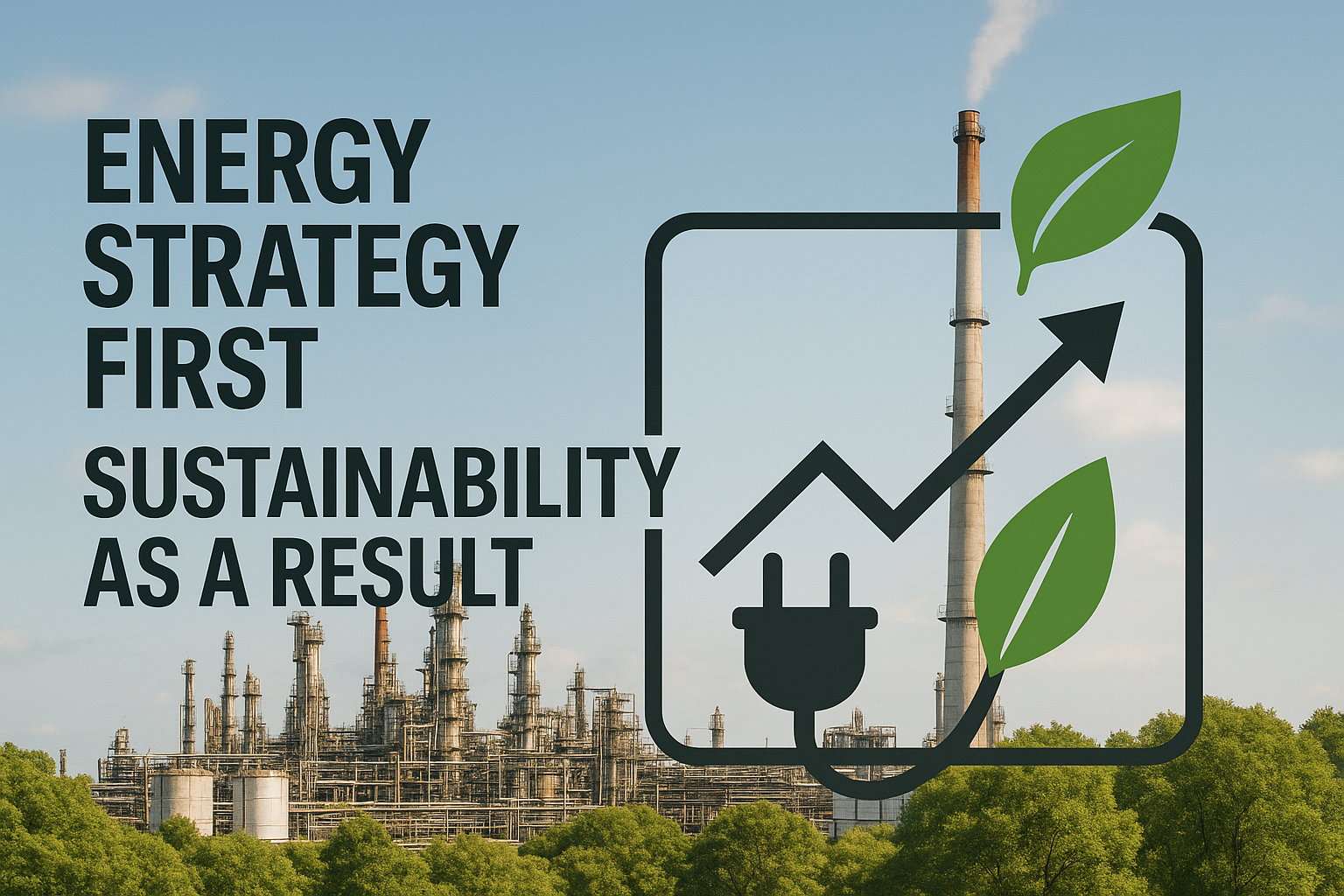Your most experienced operators are walking out the door with decades of hard-won expertise, and the clock is ticking. In process industries, the share of employees over 55 has climbed from roughly 10% in 1995 to 25% in 2025, while Deloitte projects that as many as 3.8 million additional employees would be needed in manufacturing.
Production plants have a median workforce age close to 38–43 years, which is higher than some sectors but not the highest among major industries, leaving a narrow window to capture tacit knowledge before it goes into retirement.
Industrial AI offers a strategic solution to this mounting challenge. When deployed thoughtfully, it can record, organize, and activate expert insights so that new hires troubleshoot faster, systems run more steadily, and safety events drop. The following four practical steps provide a roadmap you can start applying today to protect institutional knowledge, reduce downtime, and drive profitability.
Step 1 – Assess Current Knowledge Gaps & Data Readiness
Before implementing any technological solution, you must define what expertise truly matters. With process industries teams posting some of the highest median ages in the economy, every undocumented technique that walks out the gate widens the skills gap.
A structured knowledge assessment maps who knows what today, how that expertise flows between shifts, and where it’s already thinning as specialists near retirement.
Begin by sketching current knowledge pathways: shift logs, informal mentoring circles, and engineering archives. Trace each to the subject-matter experts who still hold the tacit pieces—troubleshooting intuition, fine-tuned optimization moves, crisis playbooks, and the historical context behind critical procedures. Many plants discover that a single operator is the sole keeper of an entire unit’s start-up procedures.
Simultaneously, gauge your data readiness. Review sensor coverage, historian depth, and metadata hygiene to ensure the information pipeline is clean enough for AI models to learn from it. Poorly labeled tags or missing calibration records will cripple later analytics efforts.
Common pitfalls that derail initiatives early include overlooking informal networks, fixating only on manuals, skimping on data cleansing, or excluding front-line operators from the assessment process.
Track progress with practical KPIs: percentage of undocumented high-risk tasks, days to complete a knowledge audit, historian data-quality scores, and a red-yellow-green risk rating for each knowledge area. These metrics provide an objective baseline before moving to AI-enabled solutions.
Step 2 – Select & Integrate AI-Powered Knowledge Platforms
Building on your knowledge assessment, the next step involves selecting and implementing technology that can effectively capture tacit expertise and deliver it to front-line operations when operators need it most.
AI-Powered Knowledge Platform Selection:
- Dynamic vs. Static Solutions – Replace outdated static documents with platforms that continuously learn from historian data, shift logs, and operator decisions to provide contextual guidance
- Natural Language Processing Interfaces – Transform operator interactions with plant knowledge through conversational queries (e.g., “Why is my compressor surging?”) that deliver context-aware answers
- Advanced Decision Support – Leverage cognitive automation for actionable set point recommendations and anomaly detection systems that flag potential issues before they escalate
- Proven Performance – Implement closed-loop optimization systems that demonstrate superior results compared to static rule sets in complex refining operations
- Integration Approaches – Choose retrofit solutions using lightweight APIs to connect historian, DCS, and CMMS data streams without disrupting control strategies, or design purpose-built data pipelines for greenfield projects
- Critical Selection Factors – Evaluate platforms based on scalability across units, deployment flexibility, cybersecurity compliance, and seamless connectivity with existing systems
- Business-Focused Evaluation – Create a simple matrix that keeps discussions centered on business value rather than technical specifications
When comparing traditional approaches to modern solutions, the advantages become clear: conventional documentation requires constant manual updates with no decision support, while cognitive automation delivers continuous learning and real-time guidance.
Begin with a pilot deployment on a high-value unit, measure success through metrics like mean time to repair, then expand systematically. Address inevitable challenges around data integration, operator trust, and security requirements through transparent governance and explainable AI models.
Step 3 – Design AI-Enhanced Training & Knowledge-Sharing Processes
Your technology roadmap only pays off when front-line teams can use it instinctively. This step shifts focus from algorithms to operator enablement, recognizing that static PDFs and classroom lectures can’t keep pace with high-hazard, high-throughput environments. You need training experiences that learn alongside your workforce and surface the right insight at the exact moment of need.
Modern AI models offer several complementary learning modalities. Advisory mode, driven by live plant data, let new hires practice start-ups, rate changes, and upset recovery without touching the distributed control system. Operators using a dynamic simulator report quicker pattern recognition because every drill mirrors actual unit behavior.
For day-to-day reinforcement, micro-learning modules generated by AI authoring tools deliver five-minute refreshers on pump alignment or catalyst change-out.
Capturing the expertise that feeds these tools requires a deliberate workflow:
- Start with structured elicitation sessions while veterans are still available
- Record video walkthroughs and annotate key decision points
- Tag knowledge assets to specific historian trends or set-point changes
- Conduct detailed task analysis that breaks complex jobs into micro-steps
- Enable context-aware suggestions so the platform can deliver relevant tips
- Maintain a version-controlled knowledge base for all captured expertise
- Implement peer review processes to validate accuracy before release
Technology alone won’t unlock knowledge sharing—organizational factors prove equally important. Incentives must reward engineers who document clever work-arounds just as much as those who close production gaps.
Visible sponsorship from plant leadership signals that upskilling is strategic, not optional. BCG research shows programs tied to career progression drive higher engagement. Position AI tools as augmenting human judgment, invite operator feedback, and measure progress rigorously.
Implement robust data security by encrypting recordings, restricting access by role, and scrubbing sensitive parameters. Use analytics to deliver personalized learning paths and build feedback loops that keep your knowledge base dynamic.
By combining simulation, bite-sized learning, and culture-centric change management, you transform AI from back-office technology to daily mentor—preserving expertise and equipping the next generation to run safer, more efficient operations.
Step 4 – Monitor, Measure & Continuously Improve
Once your AI-driven knowledge program goes live, maintaining its relevance requires closing the loop between daily performance and the expertise embedded in your systems. Start with a single KPI dashboard accessible to everyone—from front-line operations to senior leadership.
Blend operational continuity metrics more relevant to AI knowledge management, such as uptime and error rates, with learning metrics like training completions and quiz scores, plus knowledge-base indicators like article views, search success rates, and content freshness. This unified view shows in seconds where knowledge accelerates performance and where it still leaks.
Continuous Improvement Framework:
- Maintain model freshness through regular retraining and validation cycles
- Adapt algorithms to evolve with new sensor inputs and process constraints
- Capture user feedback via in-app prompts and monthly pulse surveys
- Leverage analytics to identify most-accessed procedures and operator needs
- Establish governance structures with annual knowledge-transfer reviews
- Form cross-functional committees to keep programs aligned with business goals
- Integrate with continuous improvement initiatives to transform insights into funded projects
- Implement structured triage when metrics stall: audit data quality, conduct stakeholder workshops, retrain models, and revisit incentive structures
This disciplined approach cuts troubleshooting time and opens up fresh optimization opportunities. Benchmark your maturity along the way. A reactive plant tracks lagging indicators after incidents.
An optimized plant lets AI trigger preventive actions automatically, an evolution that links to shorter onboarding cycles and measurable cost savings.
Embed Expertise in Real Time with Imubit’s Closed-Loop AI
Imubit’s Closed Loop AI Optimization solution transforms decades of engineering expertise into a live reinforcement learning engine that continuously fine-tunes plant operations. The system learns directly from your historian data rather than relying on generic simulations through its model.
As Kevin Daines, Engineering Specialist at HF Sinclair, explains, “Training the model on our actual operating data builds operator trust—it understands our plant’s unique behavior.”
Ready to explore similar improvements at your facility? Book a complimentary Optimization Assessment and let Imubit’s team map your path to continuous, expertise-driven efficiency. The future of knowledge-embedded front-line operations is already here.




